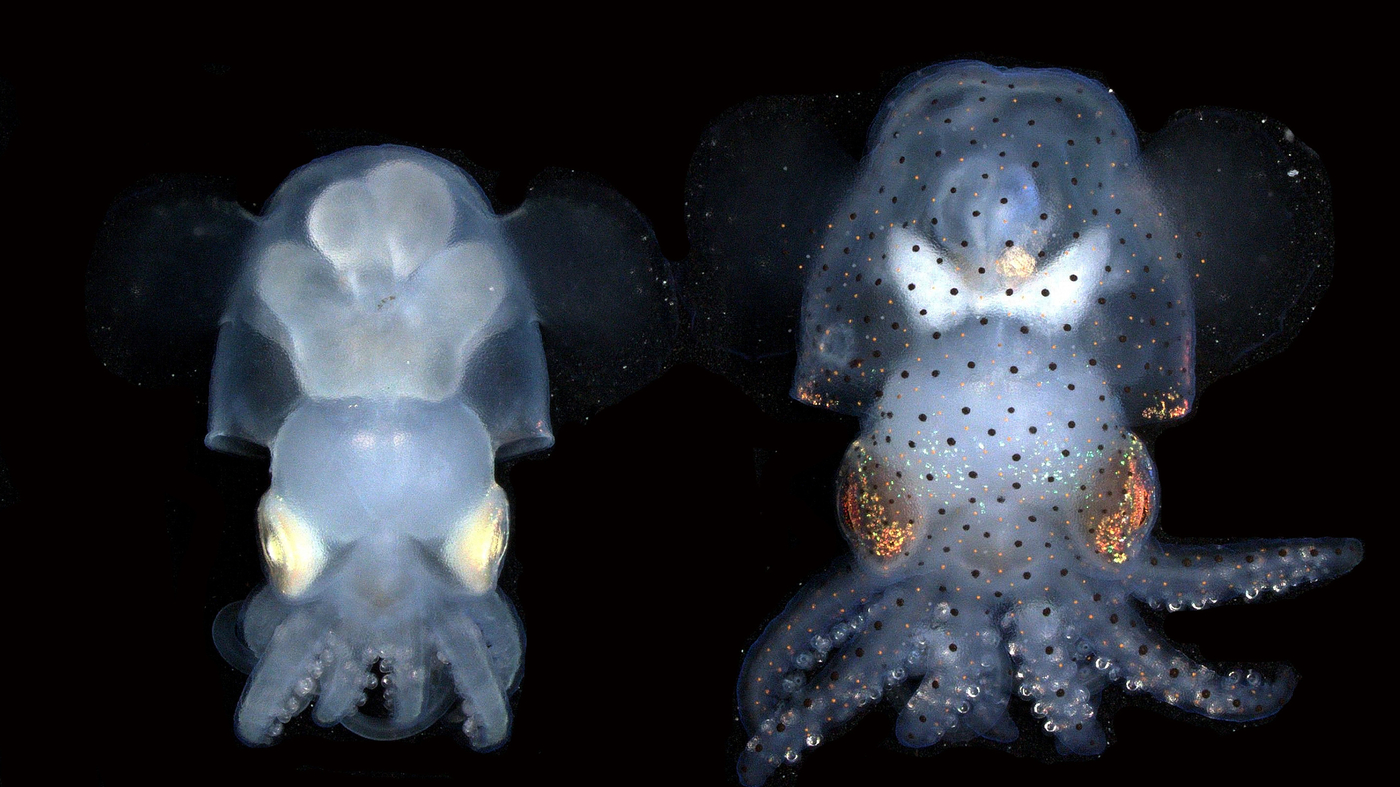
Scientists have engineered an albino squid and with it a new window into the innerworkings of the brain.
Carrie Albertin/MBL Cephalopod Program
Becoming invisible usually requires magic.
For some thumb-sized squid, though, all it takes is a little genetic tweaking.
Once these squid are genetically altered, “they’re really hard to spot,” even for their caretakers, says Joshua Rosenthal, a senior scientist at the Marine Biological Laboratory in Woods Hole, Mass.
“We know we put it in this aquarium, but they might look for a half hour before they can actually see it,” Rosenthal says. “They’re that transparent.”
The see-through squid are offering scientists a new way to study the biology of a creature that is intact and moving freely.
“It changes the way you interpret what’s going on in this animal,” says Caroline Albertin, a fellow at the lab. “You can look through and see their three hearts beating, you can see their brain.”

The transparent squid is a genetically altered version of the hummingbird bobtail squid, a species usually found in the tropical waters from Indonesia to China and Japan. It’s typically smaller than a thumb and shaped like a dumpling. And like other cephalopods, it has a relatively large and sophisticated brain.
The see-through version is made possible by a gene editing technology called CRISPR, which became popular nearly a decade ago.
Albertin and Rosenthal thought they might be able to use CRISPR to create a special squid for research. They focused on the hummingbird bobtail squid because it is small, a prodigious breeder, and thrives in lab aquariums, including one at the lab in Woods Hole.
…
Read the full article here

Leave a Reply